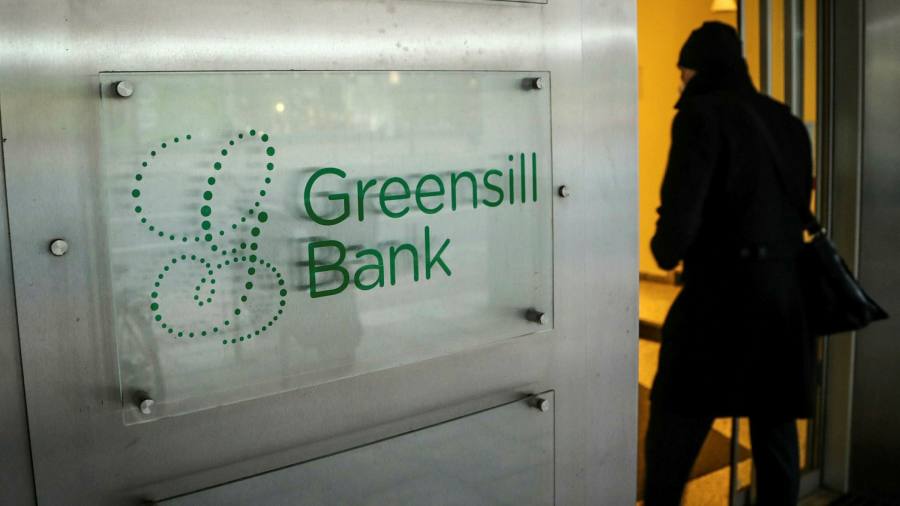[ad_1]
Relief tempered by residual nervousness will be the likely reaction of central bankers and financial regulators to the sudden implosion of Greensill Capital, a sizeable shadow bank.
The plight of this global player in supply chain finance appears to pose no systemic threat or need for a central bank bailout. Yet its rapid passage from hubris to nemesis raises disquieting questions about the evolution of the global financial system and the ability of the regulatory authorities to keep abreast.
Greensill bore many of the classic signs of a financial accident waiting to happen, starting with a flamboyant founding entrepreneur, Lex Greensill. The company’s website trumpets his trajectory “from humble beginnings to revolutionary thinkingâ€, explaining that he saw the devastating impact that inefficient financial supply chains can have on a business as he grew up on his parents’ sugar cane and melon farm in Australia.
Revolutions in finance have a nasty way of ending badly, especially when they happen at breakneck speed. Greensill Capital went from nothing in 2011, when Lex Greensill abandoned a big-bank career, doing global supply chain financing at Morgan Stanley and Citibank, to go it alone.
By 2019 this upstart non-bank says it had extended $143bn of financing to 10m-plus customers and suppliers in 175 countries. Its founder also notched up powerful contacts in government and hired former UK prime minister David Cameron as an adviser.
In banking that rate of expansion tends to point to excessive risk-taking and a poor-quality loan book. And certainly the Australian parent felt balance sheet strain. In 2016 and 2017, its liabilities exceeded its assets, according to a report by Scope rating agency. Yet Lex Greensill pulled off an astonishing coup by persuading first private equity group General Atlantic to put in $250m of fresh capital, and then the SoftBank Vision Fund of Japanese entrepreneur Masayoshi Son to stump up $1.5bn more.
So it is no surprise that the last accounts filed by the British subsidiary at end-2019 showed a very solvent balance sheet with a fat capital cushion of $155m backing total assets of $682m. Yet, in supply chain financing the face of the balance sheet conveys little about the nature of the risks being run.Â
Supply chain financing is just a fancy modern name for the age-old practice of factoring, whereby suppliers sell at a discount the debts their customers owe them to a financier who collects the full amount in due course. Lex Greensill’s revolutionary innovation was to realise that these debts could be packaged into investment funds — much as the big investment banks turned subprime mortgages into securities before the 2008 financial crisis.Â
The investors, who were chiefly clients of Credit Suisse Asset Management and fund manager GAM, required Greensill to take out credit insurance to cover the debts. But — unlike the subprime mortgage lenders — Greensill continued to have skin in the game because it was exposed to first losses under an uninsured part of the fund.
This insurance was an important safeguard for investors, not least because the portfolio was heavily concentrated. The Scope rating agency estimated in 2019, for example, that two-thirds of the German subsidiary’s loans originated from a single group of linked private companies. These were almost certainly part of the metals magnate Sanjeev Gupta’s empire. And such concentrated exposure was one of a number of concerns of the German watchdog BaFin, which this month ordered the German operation to be closed for business.
The big risk that Greensill’s balance sheet could not reveal was that of insurers ceasing to provide cover. That is precisely what happened. Greensill Capital’s main insurer, Tokio Marine, has drawn a line and Greensill’s legal suit in Australia to force it to restore coverage has failed.
Both Credit Suisse and GAM have decided to freeze their funds.
This has exposed a flaw in Greensill’s business model quite as devastating, say, as the overdependence of Northern Rock or GE Capital in the financial crisis on short-term wholesale funding while financing longer-term illiquid assets. Without insurance, a low risk portfolio of loans would potentially be
replaced by a high-risk, over-concentrated portfolio beset by all the
hazards of the worst recession in living memory – clearly a
non-starter for investors.
A striking feature of this saga is that Greensill Capital, like the failed payments group Wirecard, owned a regulated German bank while large parts of its operations fell outside mainstream banking regulation. The capacity of shadow banking to spring more dangerous systemic shocks should not be underestimated.
[ad_2]
Source link





